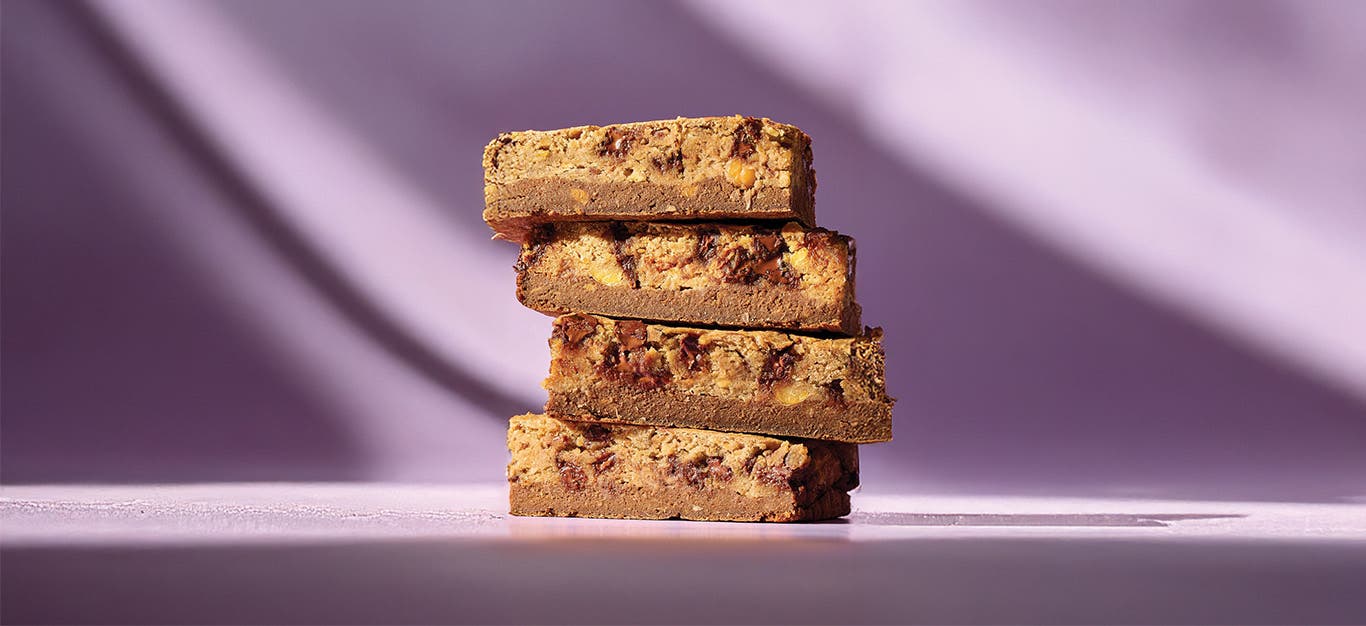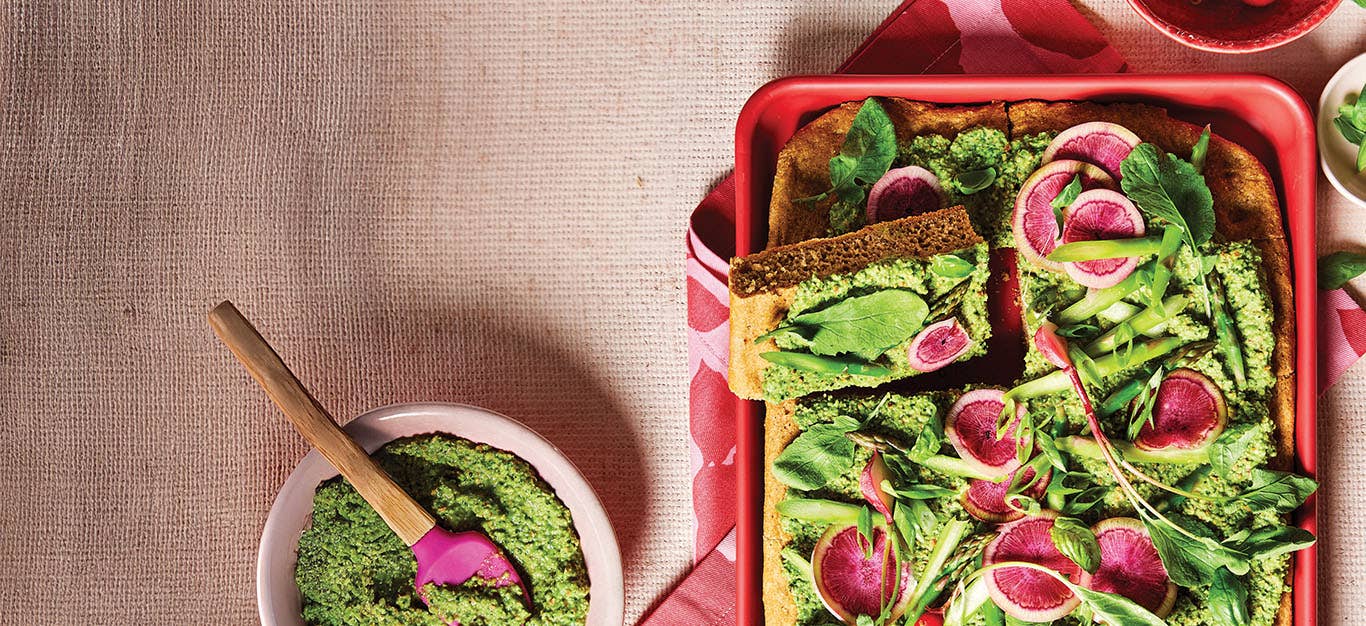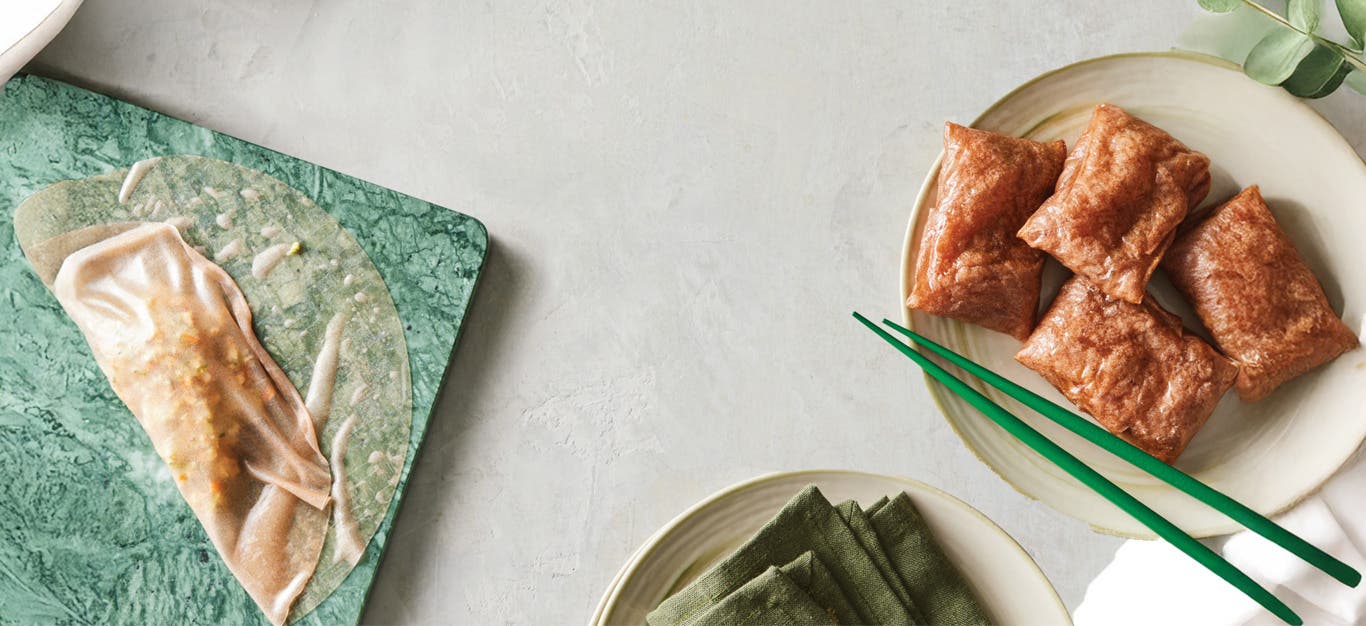- Prep-time: / Ready In:
- Makes 7 to 8 palm-size burgers
- Serving size: 1 burger
- Print/save recipe
Savory and satisfying, and loaded onto a whole-grain bun with the works, a good burger is always a hit. Plant-based burgers, aka veggie burgers, are a popular transition food that you can carry well into a full-fledged practice of plant-centered eating. This basic veggie burger recipe is drawn from the meatloaf formula my Mom used when I was a kid: ground meat, chopped onions, tomato sauce for moisture, seasonings, and oatmeal or breadcrumbs to bind it all together. I simply switched in meaty beans and grains (according to the dictionary, one definition of “meat” is the edible part of any food), added a variety of vegetables and seasonings, and dressed it in a nice crisp coating. This is a perfect example of taking a meal you already know and plantifying it.
Plant-based burgers don’t need to be limited to “burger” form, either. You can to create “meatballs” from any of these variations, serving them over pasta or rice with a sauce, or you can break them into bite-sized croquettes. Extremely versatile, these veggie burgers can be cooked up on the spot, or baked in batches to keep in the fridge or freezer for grabbing on the go.
Use this template to make All-American Veggie Burgers, Mexican Veggie Burgers, Indian Veggie Burgers (pictured), and Smoky Black Bean Tempeh Burgers.
Notes:
Short-grain brown rice has a natural stickiness that holds the burgers together; substituting long-grain rice or another grain may result in a burger that falls apart more easily. For a more savory flavor, cook the rice in low-sodium vegetable broth instead of water.
About nuts: While the optional nuts in this recipe add texture and flavor, you can eliminate them to reduce fat content.

Ingredients
Base
- 1 15-ounce can beans (any kind, rinsed and drained (1½ cups)
- 1 cup cooked short-grain brown rice (see note)
Vegetables/Nuts
- 1½ cups chopped raw vegetables (example: ½ cup each of onions, carrots, and mushrooms, or any desired combination)
- ¼ cup chopped nuts, such as walnuts, almonds, and/or pine nuts (optional; see note)
Binder
- 1 cup quick-cooking rolled oats, or bread crumbs
Seasonings
- 2 cloves garlic, crushed, or ½ teaspoon garlic powder
- 1–2 tablespoons of your preferred spices and seasonings, to taste
- ½ teaspoon sea salt
Moistener
- 2–3 tablespoons unsweetened, unflavored plant milk or vegetable broth, as needed
Crisp Coating
- ¼ cup cornmeal or chickpea flour (more as needed)
Instructions
- Lightly pulse the beans in a food processor, leaving some chunks for texture, or partially mash them with a potato masher. Place the beans into a large bowl, along with the rice.
- Finely chop the raw vegetables. I use my food processor, first cutting the vegetables into 1-inch pieces and then pulsing until finely chopped. Add the vegetables and nuts to the bowl with the beans and rice.
- Add the binder and seasonings to the bowl, and knead to make the mixture workable for forming burgers. Add the moistener, 1 tablespoon at a time, if the burgers don’t hold together well. Chill for an hour or more, if time allows.
- Form the mixture into palm-size patties about ⅜-inch thick.
- Place the cornmeal or chickpea flour coating on a plate. Gently coat both sides of each burger, one at a time. Roll the edges against a flat surface to make a round shape with flat sides, and pat the coating onto the sides as well. This adds a nice crispy surface and helps the burgers keep their shape.
- Cook the burgers in a nonstick pan over medium heat for 5 minutes, then turn and cook the other side for 4 to 5 minutes more. You can also bake the burgers on a baking sheet at 350°F for about 20 minutes.
- Serve on buns or alone with your favorite condiments. Expect a savory, soft texture and a thin, crisp crust.
Per serving (1 burger): 158 calories, 25 g carbohydrates, 5.8 g protein, 4.3 g total fat, 0.5 g saturated fat, 0 g cholesterol, 213 mg sodium, 5.1 g fiber, 2.3 g sugar
Note: Nutritional information is provided as an estimate only.




Comments (19)
(5 from 7 votes)I use dried black beans and baby lima beans, boil 3 minutes and sit covered 2 hours. Rinse, add fresh water in instant pot high pressure 25 minutes with natural release. Take amount you want, put in colander to drain. (Any vegetables you want, cook separately to use separately on top after burger cooked. I use 4 cups or more of cooked drained beans 1 cup oats ground in electric coffee grinder 1 cup corn meal 1 table spoon ground flax seed. 1 or 2 tablespoons chopped nuts Garlic powder Onion powder Paprika Small Amount cumin Poultry seasoning 1 + table spoon Some oregano. Salt (easy) I use a touch of lime juice a teaspoon Note: on your seasoning, do not go overboard but more is better than the original recipe calls for. Mix well, the dryer the better but you want to form a ball that sticks together. Form into pattys, chill; fry or bake. Another wonderful bean for burgers is kidney beans. If you cook your own dried beans, you control what is in them and not from a can. (My preferred way of doing things) (Mushrooms, onions, peppers, zucchini, pimentoes, vegan cheese, almond butter or tofu mayonnaise, hummus) but, again the vegetables should be cooked separately and then put on top, not in the burger. Once you do that and keep burger mix dry enough, it works!
I really enjoyed these patties. I used black beans, pistachios, oats, and seasoned with TJ’s green goddess mix. Veggies were mix of onion, mushroom, and zucchini. Coated with corn meal and grilled. I served them with grilled zucchini and bell pepper. They are a bit loose but the texture firms up when they cool a little. I think they would be great baked in muffin tins, but I enjoyed grilling them on this hot summer evening. Will make again.
Can’t find the note section here on the rice or other things
There is a note in the body of the introduction to this recipe that talks about the rice as well as other grains.
There are people following this way of eating for their health. They miss, and want, their burgers! I personally don’t see a problem with that. If giving them a fake “burger” keeps them on this path that’s a good thing, right? What difference could it possibly make as long as people are consuming less meat and more plants?!
This is a great basic recipe for veggie burgers. My kids loved them. I expect this to become a regular recipe going forward. I especially appreciate it that the ingredients are all healthy, and the recipe doesn't ask for a lot of oil or spices. I found that avocado slices and tomatoes make great toppings.
Excellent recipe! The finished product neither tastes nor looks like meat yet is satisfying and totally healthy! Thank you for all the hard work FoK puts into recipes. Your recipes have saved me from cancer, and the variety has saved my sanity while making the transition to healthy eating 4 years ago!
Great texture, crunchy outside but not squishy inside. Perfectly firm. I omitted garlic (might have been a mistake- more flavor) and I would suggest lots of spices as the recipe says. Husband says he would have again, a true testimony. I would too!
I don't understand the quest for recipes that appear to be, and/or have the texture of meat? Why do you all promote this? These types of recipes are more vegan than wholefoods, plant-based nutrition. The WFPB lifestyle is based on consuming more plant food, therefore, I don't need my plants to look like meat. I understand that it's Labor Day. But can we start some new traditions other than eating hamburgers to help celebrate the day?
Christallin, I completely agree with not trying to replicate the food we are purposely avoiding for health and/compassionate reasons. However, a WFBP patty (my preferred word) is an easy , tasty and convenient food to batch cook and very versatile. Vegetable and grain based patties are common fare in many cultures, meat eating or not. Bon appetite!
What's not healthy about this recipe? Especially if it also includes convenience, skips the fake meat products and uses whole grains, legumes and veggies?
You can do what you want. Doesn't mean you need to question others. Some people like the idea of a "burger" that they can put on a bun and add toppings. This is giving ideas for such people. Doesn't mean it's "promoting" anything. Don't read these recipes if you don't want them. Simple as that.
Can I use wild rice or barley or or quinoa or millet ?
The note in the body of the introduction talks about that. You need to scroll up until you see note.
Can these be frozen for later use? Cooked before or after freezing?
Wondering about flax, particularly ground flax, as a binder?
Freezer friendly?
Found the rice note. Sorry!
No Note about rice.